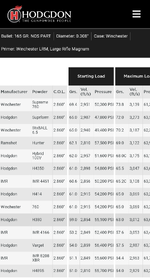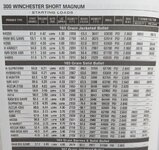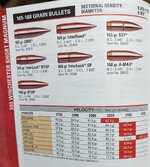Shorthunter
FNG
- Joined
- Nov 26, 2021
- Messages
- 60
I find it interesting to compare book data sometimes. I work up loads for a specific rifle when I can, but I do produce reloads for general use (multiple guns). Sometimes the book data is halfway close with the max charge being 3 or 6% +/- and then there's data like this where it takes quite a bit of time to decipher.
Hogdon, Lee and Hornady snips below. Just look at the numbers for Winchester 760. There is a significant discrepancy between all 3 sources.
This isn't bad information though. When I look at it I see potential nodes at 63.1, 65.0 and 69.0. What do you guys see? Any thoughts other than the recommendation to start at the lowest and work up (not saying it's not good advice, it just gets overstated sometimes)



Hogdon, Lee and Hornady snips below. Just look at the numbers for Winchester 760. There is a significant discrepancy between all 3 sources.
This isn't bad information though. When I look at it I see potential nodes at 63.1, 65.0 and 69.0. What do you guys see? Any thoughts other than the recommendation to start at the lowest and work up (not saying it's not good advice, it just gets overstated sometimes)




